Species:
Keruing / Apitong
Family:
Dipterocarpaceae
Other Names:
Eng (Burma, Yang (Thailand), Keroeing (Indonesia), Apitong (Philippines), Asian Mahogany (US).
Distribution:
Widely scattered throughout Indo-Malaysian region; large number found in Malaysia, hence common Malaysian name: Keruing.
Habitat:
Especially dominant species of lowland primary forest, but also common in mixed, and hill Dipterocarp forests.
The Tree:
Reaches heights of over 100-200 feet (25-45 meters). Diameters of up to 3-6 feet (.75 - 1.5 meters). Usually straight, clear, cylindrical boles up to 70 feet long, above small buttresses.
Keruing Tree
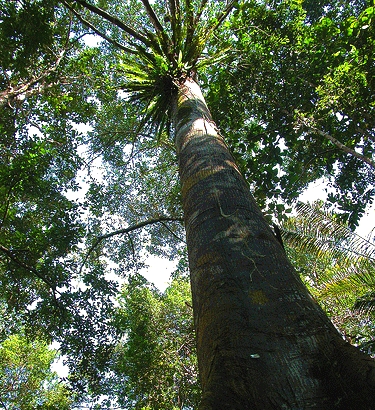
Timber Properties:
Classified as a medium hardwood. Heartwood varies from light red to dark brown, darkening on exposure; sapwood is distinct greyish-brown, usually 4-8 cm wide. Texture is coarse, but even and grain is usually straight. Strong resinous odor, taste and exudes resin which may be troublesome. Moderately durable and moderate resistant to preservation treatments, with similar overall properties to Teak hardwood.
Keruing Timber
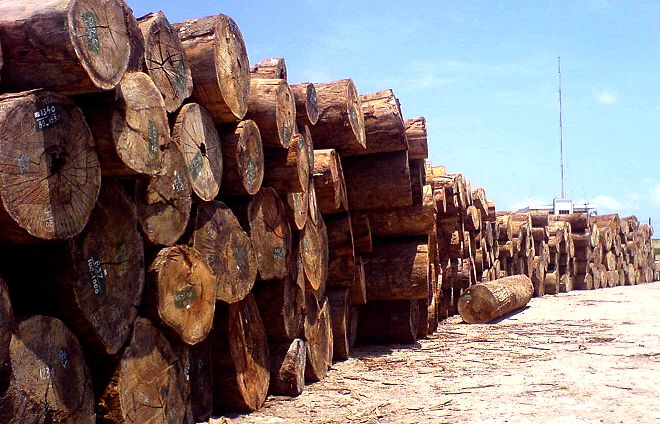
Working Properties:
There is much variance in sawing, depending on species. Generally saws and machines well. Blunting of blades common due to silica content. Sometimes difficult to glue and resin may interfere with finishes, Teak oil recommended.
Uses:
Generally used in construction such as furniture, beams, rafters, flooring, decking, and bridges. Exterior uses should be treated with a Teak oil preservative.
Keruing Grain
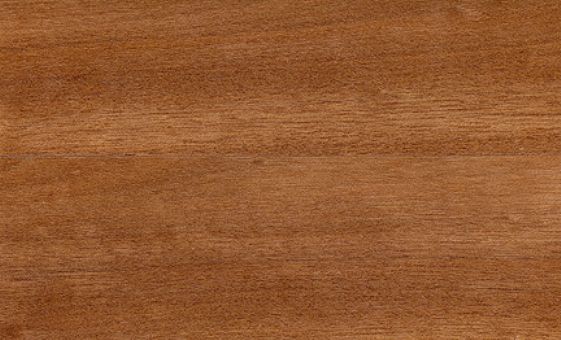
Production & Trade:
By volume the largest export wood, by volume, in Peninsula Malaysia, and one of the largest in Sabah, Sarawak, and Indonesia. Keruing is price relatively high compared to other export species.
Conservation Status:
In general, Dipterocarpus spp. are still abundant throughout the region. FAO does not list it as threatened or endangered but calls on countries to urgently continue work in collection of species, in situ and ex situ conservation.
Color:
Pink-brown to dark brown, sometimes with a purple tint.
Weight:
Between 690-960 kg/m 3 (40-60 lb/ft3)
Average 740 kg/m3 (46 lb/ft3)
D. tuberculatus weighs 880 kg/m3 (55 lb/ft3)
Specific Gravity:
Average .74 and .88 respectively.
Mechanical Properties:
• Bending strength - High
• Crushing strengths - High
• Stiffness - High
• Resistance to shock loads - Medium
Keruing Timber
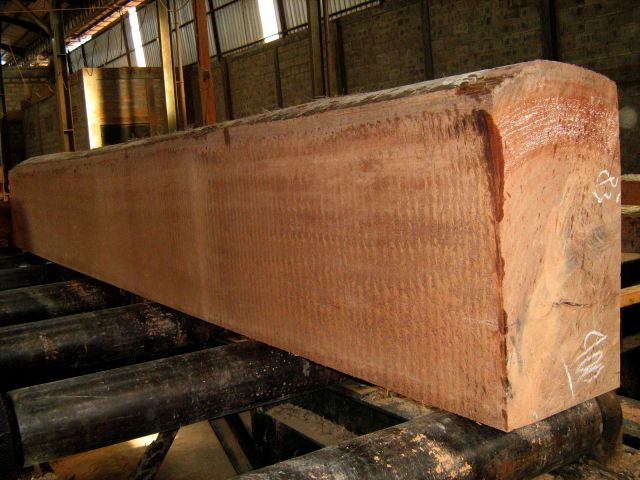
Seasoning:
These timbers dry slowly and are difficult to dry uniformly from the center outwards in thick stock or quartered stock. Distortion, especially cupping, is rare & slight. There is little shrinkage in drying and large movement in service.
Working properties:
These vary according to species but blunting is from moderate to severe when the woos also contains silica. Tungsten carbide saws are advised. Straight grain stock machines cleanly but with a fibrous finish. Planing requires a reduced cutting angle of 20 degrees on interlocked grain. Resin adhering to tools, machines, and fences can be troublesome. Nailing is satisfactory and gluing results are variable. The timbers stain well, but varnishing or polishing require care due to the stain.
Durability:
Moderate. Similar to Tectona (Teak).
Keruing Log
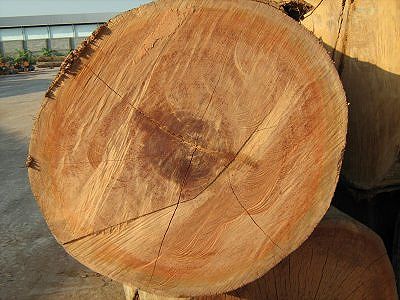
Uses:
• Wharf & ship decking
• Bridges
• Flooring in homes and public buildings
• Vehicle building
• Sills
• Wagon sides and floors
• Exterior joinery
• Outdoor furniture
References:
Oldfield, Sara. 1991. Pre-project Study on the Conservation Status of Tropical Timbers in Trade.
Prepared by World Conservation Monitoring Center for ITTO.
USDA. 1984 Tropical Timbers of the World. USDA Forest Service, Agricultural Handbook # 607.
Brown, W.H. 1978. Timbers of the World, # 4 - South East Asia. Timber Research and Development Association, England.
Sabah Marketing Corporation (SAMA) & Sabah Forestry Department. no date provided. Sabah Timbers of Commercial Importance. SAMA & Sabah Forestry Dept.